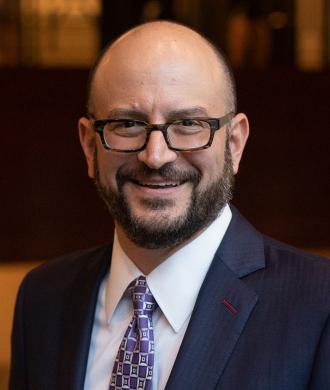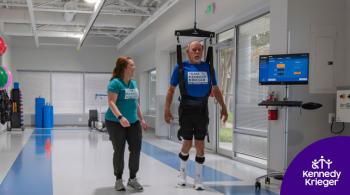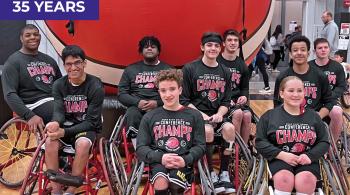Down Syndrome and the Impact of a Longer Life Span
We humans, typically, have 23 pairs of chromosomes. Sometimes, for a variety of reasons, we have an extra chromosome or we are missing one. Down syndrome, also known as Trisomy 21, is a genetic disorder that occurs when an individual has a full or partial extra copy of their 21st chromosome. Down syndrome is the most frequent of the chromosomal disorders in humans, occurring in approximately 1 in 700 births in the US. With improved care of often life-threatening clinical challenges, individuals with Down syndrome are living much longer. In this month’s podcast of Your Child’s Brain we are going to talk about Down Syndrome and especially focus on how the increased lifespan of those with Down syndrome is impacting treatment and research for people living with this diagnosis.
Resources
- Down Syndrome Association of Maryland
- National Down Syndrome Society
- National Down Syndrome Congress
- Global Down Syndrome Foundation
- LuMind IDSC Foundation
- NIH – research plan across the LifeSpan - Project INCLUDE for co-occurring medical conditions
- Eunice Kennedy Shriver National Institute of Child Health and Human Development
- National Task Group on Intellectual Disabilities and Dementia Practices - Intellectual Disabilities and Dementia Resources | The NTG
Learn More About Our Featured Speakers
Learn More About Our Featured Speakers
View Episode Transcription
Dr. Brad Schlaggar (BS): Welcome to Your Child's Brain, a podcast series produced by Kennedy Krieger Institute with assistance from WYPR. I'm Dr. Brad Schlaggar, pediatric neurologist, and president and CEO of Kennedy Krieger Institute. We humans, typically, have 23 pairs of chromosomes. Sometimes for a variety of reasons, we have an extra chromosome or we're missing one. Down syndrome, also known as Trisomy 21, is a genetic disorder that occurs when an individual has a full or partial extra copy of their 21st chromosome. Down syndrome is the most frequent of the chromosomal disorders in humans occurring at approximately one in 700 births in the US. Why is it called Down syndrome? In 1866, a British physician named John Langdon Down first described the constellation of clinical features attributable to Down syndrome. It was not until nearly 100 years later in 1958 that a French physician named Jerome Lejeune specifically linked down syndrome to having an extra chromosome 21. This additional genetic material alters the course of development and causes those characteristics associated with Down syndrome. A few of the common clinical features of Down syndrome are low muscle tone, short stature, an upward slant to the eyes, a single deep crease across the center of the palm. From a neurological perspective, they're also at significant risk for intellectual disability and epilepsy, and they have an extremely high risk of developing Alzheimer's disease later in life. To be clear, each person with Down syndrome is a unique individual and will possess these clinical characteristics to different degrees. That said, essentially all individuals with Down syndrome experience cognitive delays ranging from mild to moderate. With improved care of the often life threatening clinical challenges like congenital heart disease and leukemia, as well as improved epilepsy management, individuals with Down syndrome are living much longer. Today we're going to talk about Down syndrome and especially focus on how the increased lifespan of those living with Down syndrome is impacting treatment and research for individuals with that diagnosis. To help us dive deeper into this topic, we're joined by my exceptional colleague from Kennedy Krieger, Dr. George Capone. Dr. Capone, a pediatrician and physician scientist who directs the Down Syndrome Clinic and Research Center at Kennedy Krieger Institute, and is also an Associate Professor of Pediatrics at the Johns Hopkins University School of Medicine. Welcome, George. Let's provide some general information about Down syndrome to our audience. I described it to some extent in the introduction, but take me through a few sentences or so about how you present down syndrome to a family when you make the diagnosis.
Dr. George Capone (GC): Down syndrome or trisomy 21 is a result of extra genetic material being present in every cell of the body of the individual. This comes about through the fact that either the sperm or the egg contains an extra copy of chromosome 21. They come together during fertilization so that now you have 23 pairs or 46 chromosomes plus one extra. Equaling 47. This is usually regarded as a spontaneous occurrence during division of the sperm or the egg cell, and it's not typically inherited from the mother or the father per se, except in very exceptional cases. As I mentioned, every cell in the body contains this extra chromosome, and that has an impact on development of the embryo fetus right from the very beginning. There's about 250 or 300 genes on chromosome 21 that are overexpressed, meaning they produce more gene product, more protein. This has an effect on many aspects of development, growth, and differentiation in all body tissues, including the brain.
BS: Let's go further about the brain. In what way does that extra chromosomal material affect brain development? What are the consequences?
GC: Brain growth and organization is affected generally, and it impacts differently on different circuits. Having the extra chromosomal material from such an early point in development causes fewer nerve cells and glial cells to be proliferated during early development. Then you have other major events that follow from that, including the movement of cells to their final destination in the brain, then you have differentiation or outgrowth of neurons to form these very complex connections. The level of complexity is not as high in people with Down syndrome because of the fact that you're starting off with fewer nerve cells to begin with.
BS: You made the point earlier that even though it's a genetic disorder, it may not be inherited. There's something that happens to dad's sperm or mom's egg that increases the likelihood for having that extra chromosome 21. What are the factors that increase that likelihood for having a baby with Down syndrome?
GC: There's a couple of known factors. One of them is if you've had a previous pregnancy and had a child with Trisomy 21, you would be predisposed to another occurrence. We know that the age of the mother is rather important because after about age 35, the incidence of producing an egg with an extra chromosome goes up in a rather dramatic fashion, hence the increased chance of a pregnancy with Trisomy 21. I should say that there's no known environmental or toxic exposures that seem to be responsible here. This is one of the interesting aspects about cellular metabolism, in particular, the oocytes in particular because the oocytes go through their first division really while the mother is still a fetus. Then they become suspended, and they go through their second division with each monthly cycle. It's thought that in older women, there's a higher likelihood of releasing an egg with the extra chromosome because the mechanism for holding those eggs in check, if you will, is somewhat disabled in an older woman.
BS: How often is the diagnosis made, for example, before birth or in the newborn period, or after some evidence of early developmental challenges?
GC: It used to be that diagnosis of Down syndrome occurred after the birth of the child until the development of prenatal screening and then prenatal testing. Because more women are being routinely offered the screening or testing, a lot of babies with Down syndrome are diagnosed while they're still in the womb. This can be done by sampling some of the mother's amniotic fluid or some of the cells from her placenta. It's also possible to identify fetal cells and hence fetal DNA in the mother's blood. Because you have these fetal cells circulating in the mother's blood, you can run tests to detect the extra chromosomal material.
BS: I mentioned earlier that it's about one in 700 births in the US, where the baby has the diagnosis of Down syndrome. Is that incidence, the number of new cases each year going down, going up, staying the same? What are those dynamics?
GC: It's interesting that the CDC revises its numbers every so often. I believe that the current number is about one in 670 pregnancies or live births will result in a child with Down syndrome. There's about 5,700 children born with Down syndrome every year in the United States. That's been relatively stable in the last decade. The number of people with Down syndrome in the US is not too much changed by virtue of the prenatal screening and prenatal diagnostic studies because we have a lot of older adults who are surviving longer, living longer, and so the number of people in the US has remained fairly constant for a while.
BS: Let's talk about the non neurologic medical conditions in children with Down syndrome. I mentioned heart disease, leukemia. What are the other conditions in addition to those, and we can talk about those as well that you worry about?
GC: Sure. Well, when the child is born, there's usually great attention paid to looking at the heart and looking at the GI tract. As you mentioned, you can have a hole in the heart resulting from a failure of the two sides of the heart to develop normally so that there's a connection between the left and the right side of the heart, which left unfixed, will eventually impair the pumping action of the heart. You've also got the possibility for partial blockage or narrowing of the GI tract anywhere from the esophagus all the way down to the rectum. You can imagine that food and nourishment can't pass, and elimination cannot take place, and so that needs to be corrected fairly early. Another issue that comes up in the newborn period is something called transient myeloproliferative disorder, which is an overproduction of white blood cells. Usually, this is self-limited, and it subsides over time, but sometimes it leads to viscosity issues in the circulating blood, and you can have congestion of the spleen, the heart, the liver, and so some action may need to be taken to relieve that. After the newborn period, and we're dealing with young preschool and school-age children, you have a higher incidence of acquired medical issues, and virtually all of these can be managed with current medical treatments. The kids are generally of smaller stature and have delays in growth. They may have underactive or overactive thyroid gland, which can be treated with medication. There may be recurrent ear or sinus infection or other types of respiratory infections, especially viral. You can have GI reflux that lasts longer than the six or eight months during which we typically see in typically developing children. You can have constipation, gluten sensitivity, or celiac disease, vision, and hearing problems, which are usually easily corrected, and there's a higher incidence of sleep apnea as well.
BS: That litany of concerns because of advances in pediatric care in general, recognition and interventions, as you mentioned, we are able to manage those conditions. As a consequence, individuals with Down syndrome are living longer. The average lifespan of a person with Down syndrome is getting into their seventh decade, about 60-plus years old now. As recently as 1983, the average lifespan of a person with Down syndrome was more like 25 years old, so it's quite remarkable. How has that lifespan increase impacted individuals with down syndrome or broadly?
GC: For one, many individuals are living so long that they outlived their parents. There needs to be a family care plan in place for the care of the individual with Down syndrome as they approach their 50s and 60s. Typically, it would be a brother, a sister, an aunt or uncle, or another loved one who would be involved in their care after the parents pass away or become unable to care for their child. The other aspect, of course, is that we have an increase in aging-related conditions that appear at an earlier chronologic age in the life of the person, in part because biologic aging takes place more rapidly. By some estimates, people with Down syndrome in their 40s are more like a typical person in their 60s when it comes to their biologic age. This produces a unique situation in which age-related disorders start to appear earlier in life. It's important for primary caretakers and for physicians to be aware of this so that these things can be monitored.
BS: George, let's talk about individuals with Down syndrome living longer and perhaps outliving their parents, for example. You mentioned increased risk for advanced of age-related conditions occurring earlier than in say, neurotypically developing individuals. Let's talk about mental health challenges that individuals aging with Down syndrome have. What are you saying clinically?
GC: Just like other people who experience loss or sudden change in their life, we do see a lot of grief reaction in people with Down syndrome as a result of losing a parent, a grandparent, a friend, or other family member. It can be quite a challenge to provide support in those situations. I wouldn't say that there's a lot of expertise for caring for the mental health problems of people with intellectual disability, but there are a lot of principles and good practices for taking care of people with grief or bereavement. Usually, those are the things we'll discuss in clinic when the need arises. Some individuals if the grief response lasts longer than anticipated, which is typically 6-10 months. But as you can imagine, everybody experiences these things differently. Sometimes it can lead to something more significant like a depression, or a functional decline where the person develops not only mood problems but problems in thinking, problems with appetite control, sleep, and there's a general decline, if you will, in their ability to take care of themselves. This is not the same thing as age-related dementia, which is often something that people think of in an elderly person with Down syndrome, but these declines can happen even in young people in their 20s, 30s, and 40s.
BS: You just mentioned dementia, let's go down that path a bit. We now know that the vast majority of individuals with Down syndrome will show signs of Alzheimer's disease sometime in their 50s. The underlying processes leading to early Alzheimer's disease are well known to be underway much earlier. What do we know about this process so far? What type of research is being done to learn more, and maybe take this opportunity to talk about some of the barriers that have existed to doing the necessary research to understand Alzheimer's disease in patients with Trisomy 21.
GC: It's fair to say that the onset of age-related dementia is earlier in folks with Down syndrome. Becomes a concern by the time you get to your mid 50s or later. It may start as something as simple as forgetting familiar names or routines or becoming more easily confused about things that were previously very easy and automatic for that person to do. You can also see more in the way of mood changes, behavior changes, personality changes. From there, it can lead to again, loss of function of once well-known skills. Now, there's a number of medical issues that can also cause those changes, even at someone who's already in the risk category for dementia. It's important to pay attention to things like sleep apnea, systemic illness of any kind, sudden vision or hearing loss, or a different mental health diagnosis altogether, such as depression, which I had mentioned earlier, see easily confused with dementia. The reason for this predisposition is, there's also a biological dimension to this, in that one of the proteins that is a main player in Alzheimer's type dementia is the amyloid protein, which interestingly is coded on chromosome 21. By virtue of having an extra copy an increased production of amyloid protein, it's thought that that represents the greatest risk for people with Down syndrome as they age. The presence of amyloid, even when it's in a soluble form, is still damaging to nerve cells and glia, and in the later stages, you see it deposited externally in the brain, which is traditionally how the diagnosis has been made. There's now more sophisticated ways of making that diagnosis using something called pet imaging for amyloid, which can allow you to make the diagnosis in a living person. It's fair to say that there's been a lot of interest in the last decade in identifying biomarkers to detect the presence of dementia in its earliest stages. This is both for the Down syndrome and the neurotypical population. Because it's going to be important at some point to begin therapies early in the course of the disease rather than later on by the time symptoms are already pretty far advanced. I'd say there's interest in these not only developing biomarkers and actually doing clinical trials to test some of these newer anti-amyloid therapies to see if they work in treating the disease at the earliest onset. Ultimately, the million-dollar question is, can it be prevented if these medicines are as good as we think they are?
BS: Do you want to comment on some of the barriers to why we're not, perhaps further along with understanding Alzheimer's disease in the setting of Down syndrome?
GC: Historically, one of the reasons why we're not as far along in understanding this is that until the last seven years, the NIH funding for Down syndrome-related research was not very robust. It wasn't enough to support a critical mass of people interested in research in this issue. To train enough people to actually do the research and do the teaching around the research. In more recent years, the NIH budget has increased rather dramatically, and there's a big focus on co-occurring conditions with Down syndrome. The medical and psychosocial issues that we've been talking about are now front and center on the NIH research plan. Things are moving along at a slightly quicker pace. There's more effort to build an infrastructure, which is something that's never existed before, a research infrastructure among Down syndrome care providers and clinics to have a network for not only doing research, but running clinical trials when the time comes.
BS: George, you're one of a number of people who has been for some time advocating for training for those in law enforcement and security services for better understanding of people with intellectual disabilities. One of the key moments, as I understand, is that just over 10 years ago the death of Ethan Saylor was really a catalytic moment. Why does this matter so much for you to make sure that people with intellectual disabilities have such a voice? Maybe take us through, not everybody will necessarily know that story from 10 plus years ago.
GC: Ethan Saylor was a young man from Frederick, Maryland who in 2013 died tragically when security officers were called to respond to his remaining in a movie theater after the show was over as he wanted to stay for a second performance, he was told he needed to buy another ticket or leave. In any event, an argument ensued. It led to a physical struggle. He was restrained and then pinned down for a period of time resulting in some collapse and damage to his airway. Which eventually led to asphyxia and heart damage and brain damage. The reason that I feel so passionate about this is number 1, I knew Ethan personally from a younger age. He was just a terrific vibrant person whose aspirations and hopes were really not much different than any other young person. The incident of his death was both tragic and preventable. The fact that we need to make sure that people who are responding in critical moments of people's lives recognize people with intellectual disability, autism, or who are in the throes of a mental health crisis. They need to be better trained in the escalation techniques and in ways of just interacting with that person, and seeking input from caretakers around them. As a result of this tragic event, Ethan's family members petitioned Governor O'Malley to establish the Ethan Saylor Alliance, which is a program that was created to provide training to first responders in Maryland. Maryland is the first among many states to have such a program. It's important for responders to receive this training, and in previous years, they received little to none. So I think that this is making a big difference in our state currently.
BS: The literature on health care service utilization by adults with intellectual disability broadly, including those with Down syndrome indicates that this population experiences significant health disparities accessing health care compared to the general population. From your perspective, what are the barriers to improved health care access and service access for individuals with down syndrome and intellectual disability broadly?
GC: There's a couple of ways I would respond to that. Number 1, there are too few specialty providers or clinics that can provide this complex care to these individuals when needed. Only about 5% of adults with Down syndrome in the US are seen by a specialty provider, even when the need for such has been identified without question. Among adult physicians, there's often a lack of familiarity with the aspects of aging in older adults with down syndrome. It's not something that's taught routinely as part of their training, and that represents an oversight now that so many people are living longer. The other aspect is that until recently, there's been a lack of health care guidance for primary care physicians to follow. Something that they can refer to, to know what to be looking for, what to be monitoring. Especially the more common conditions which can be screened for and which can be treated early. Since about 2020, there are health care guidelines published and disseminated in the medical literature that can make this job substantially easier for practicing physicians. We just have to put it in their hands.
BS: What excites you now about new and innovative therapies that researchers are currently studying that you think have high likelihood for changing the outcomes for people with down syndrome.
GC: I think the funding focus of the NIH is definitely a step toward better understanding the common co-occurring conditions that we see in people with down syndrome and ways to both detect them earlier and treat them earlier. There may be unique physiological aspects to the way these conditions are triggered or the way that they play out because they're occurring in such a unique and physiologic complex environment, which is Trisomy 21. I'm generally excited about advancing the quality of care for people with down syndrome. Of course, I'm excited about the prospects for medications that may play a role in limiting the age related onset of dementia.
BS: That point you made earlier about getting into the hands to the primary care providers, the best practices and implementation of those best practices can move the needle tremendously, so that's I think a really important point to underscore.
GC: Absolutely, that's why it's important that these guidelines be published in the medical journals that physicians are most likely to read. Why the advocacy groups for Down syndrome all across the nation have done such a good job in promoting family facing materials related to healthcare that they can share with other family members, as well as their primary care physician. Of course, there are websites listed for further information and reference. When you get this into the hands of the family who are the best advocates by far, then it stands a good chance of getting into the hands of the primary care physician as well.
BS: Speaking of websites and resources, we will be able to include a roster of such websites and resources that you recommend, George, that'll be on the page associated with this episode of the podcast. So I think that's an excellent place for us to end. Thank you to our guest, Dr. George Capone, and we hope that you are listeners, I have found this discussion about Down syndrome interesting and informative.
GC: Thank you.
BS: Please check out our entire library of topics on your child's brain at wypr.org, KennedyKrieger.org/ycb or wherever you get your podcasts. You've been listening to Your Child's Brain. Your Child's Brain is produced by Kennedy Krieger Institute with assistance from WYPR and producer Spencer Bryant. Please join us next time as we examine the mysteries of your child's brain.

















